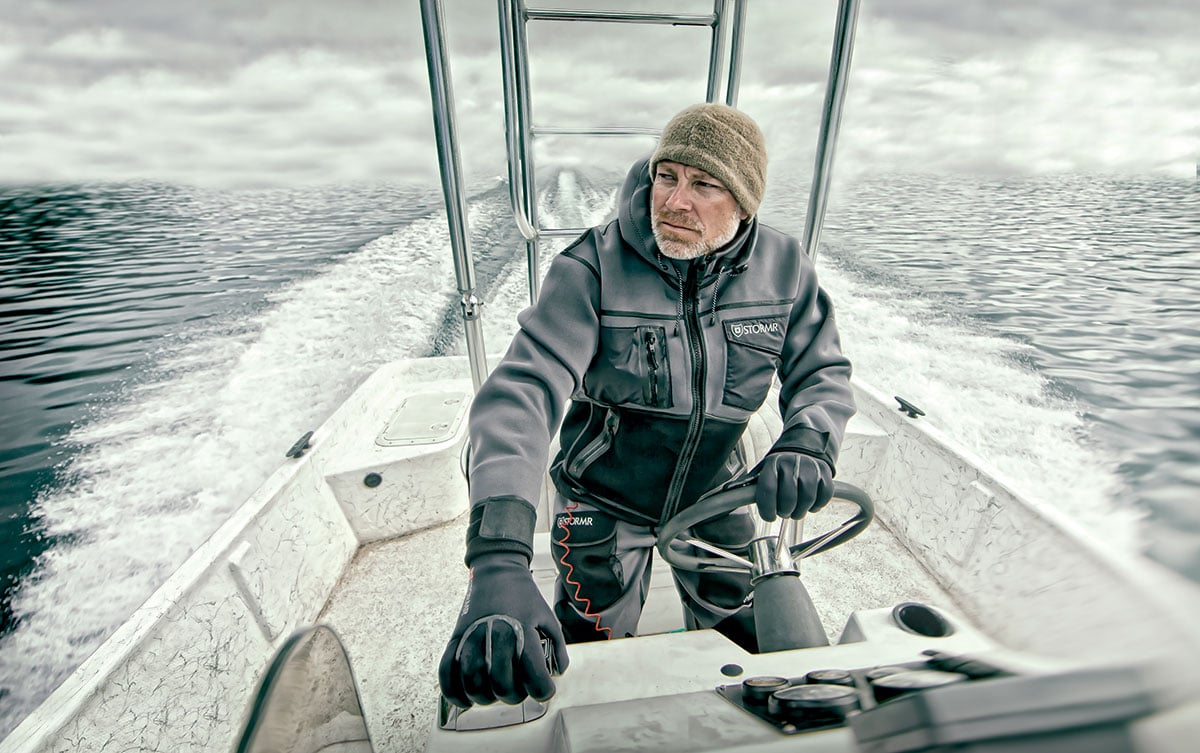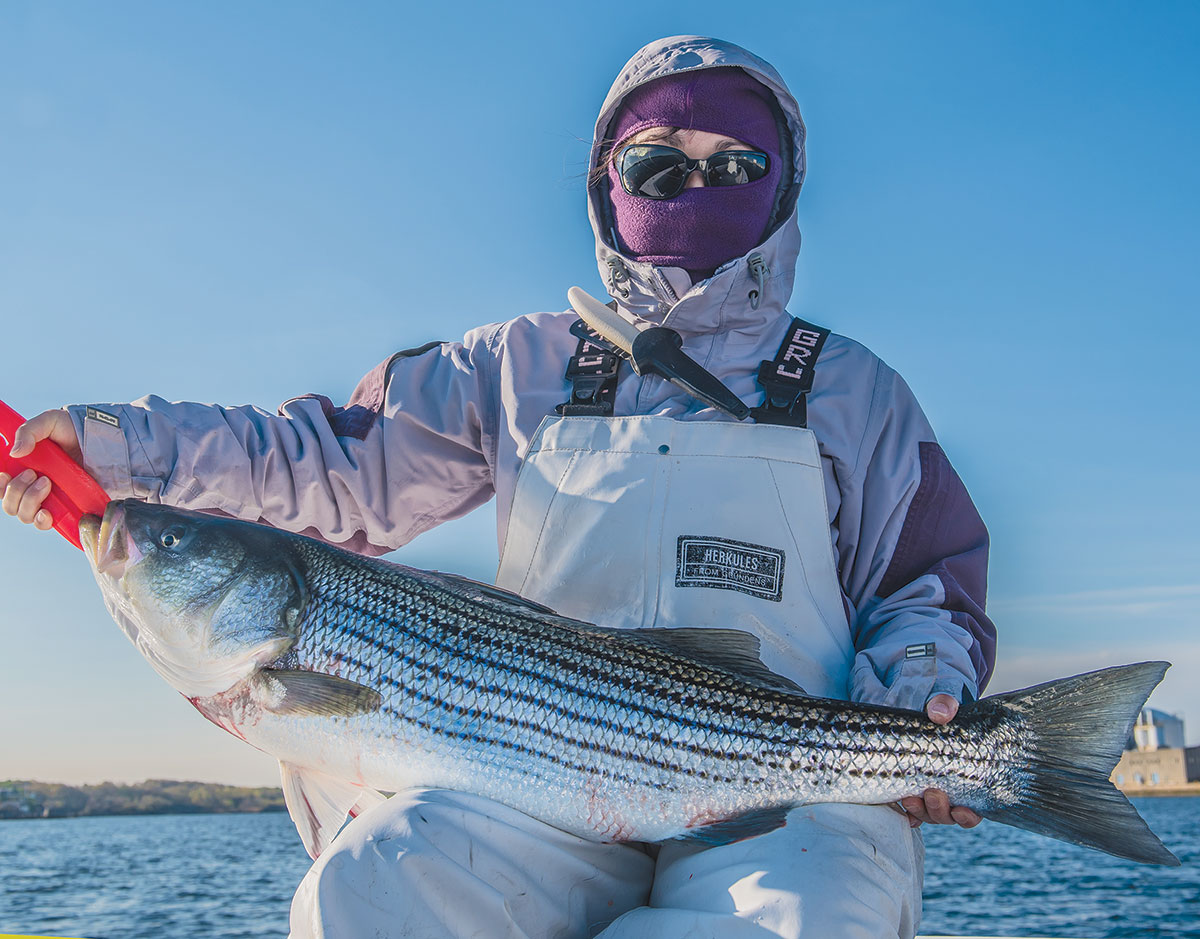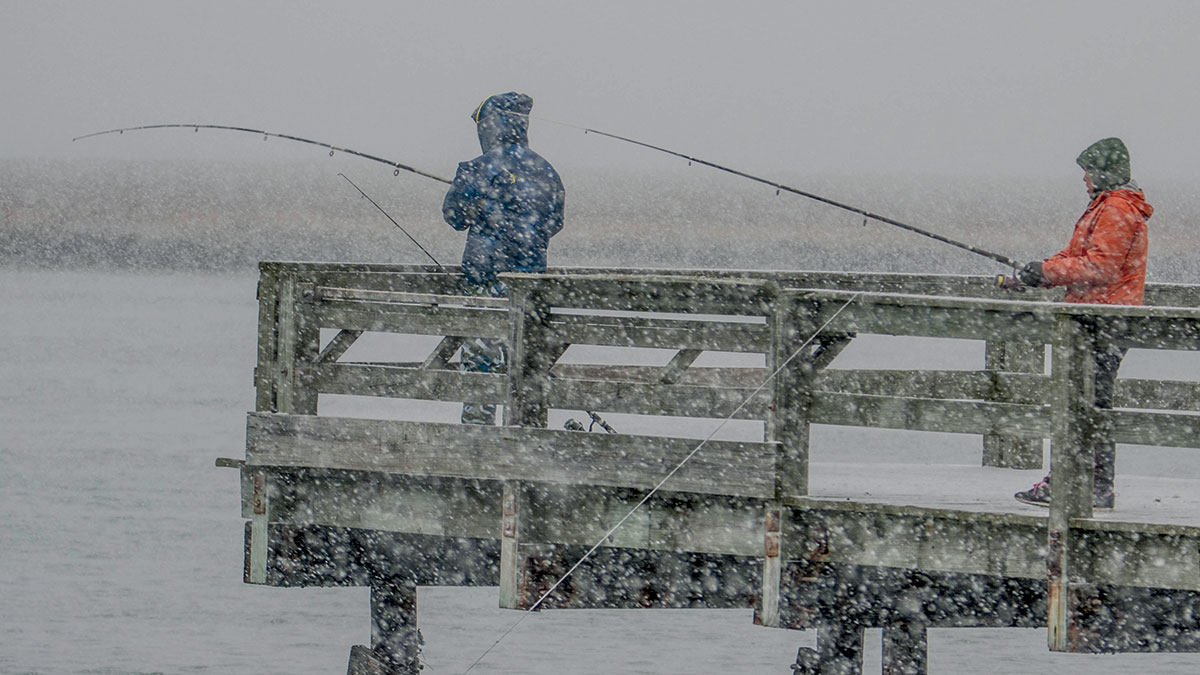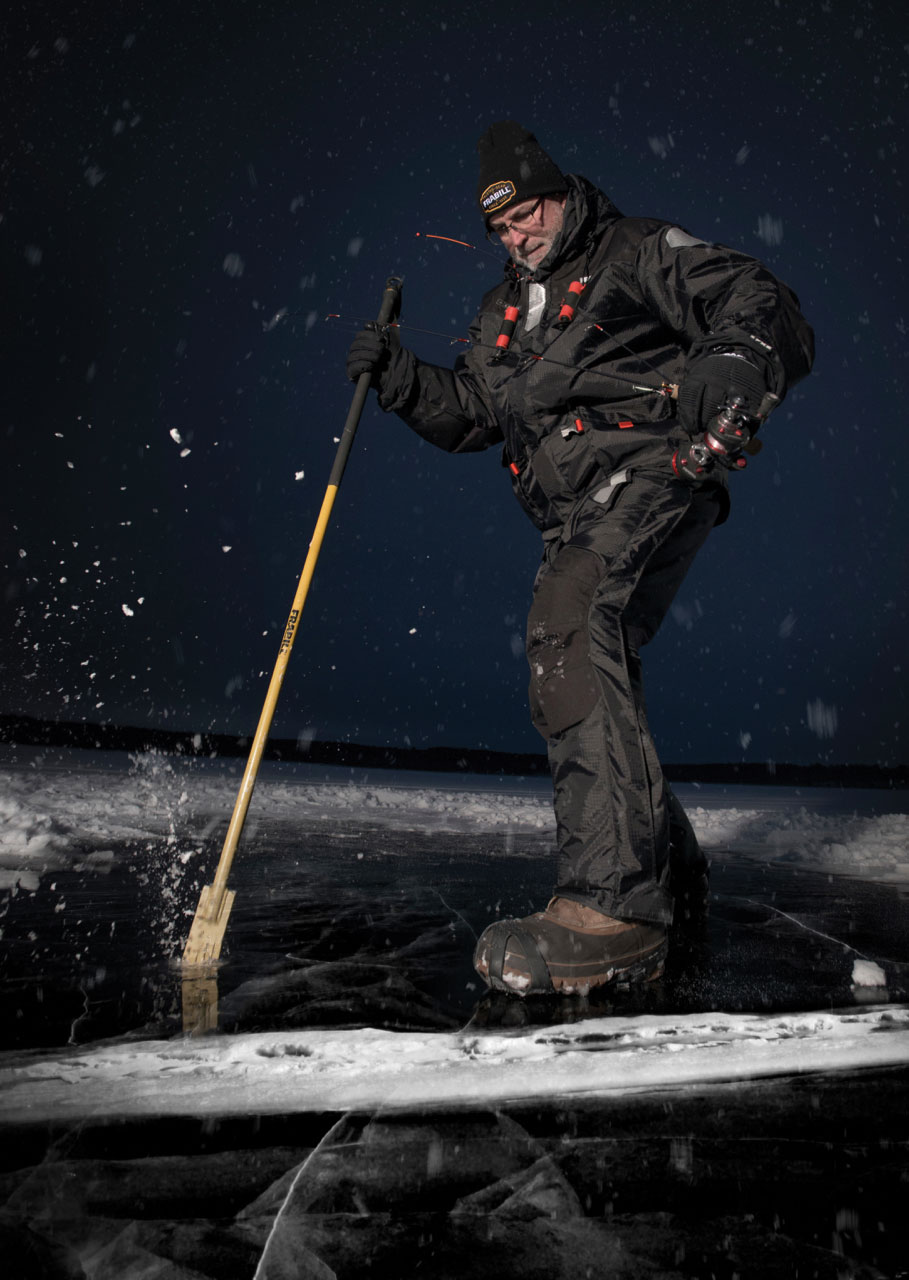
Here’s a three-pronged approach to avoiding hypothermia.
I am writing this in the warmth of my living room, but a few hours earlier I was out striper fishing in the back bays behind South Jersey, a late November sortie. Brisk, to say the least, but I am happy to say that three years of working the Alaskan Arctic and a season above Hammerfest, Norway has made me an expert of dressing for cold, wet weather.
When I sit at my favorite tackle shop, I often hear the scoffs at people who come in dressed like “the professionals.” The thick neoprene shirts, overalls, knee high boots, and thick PVC gloves. I used to joke about them as well when I was younger, “What, is a little cold too much for you?”
It is amazing what some life experience can teach you.
Prepare for the Worst
Many Fisherman readers fish just as often in the colder months as they do in our fewer warmer months, and even the most stalwart of us prepares. I will be the first to admit I am happy many of our larger offshore party boats are heated these days. The cold is a fickle thing. When you mix cold and water, it turns into a downright monster. The average person’s body temperature is a toasty 98.6 degrees. Some doctors will argue a healthy swing a degree or so on either side is normal. This controlled body temperature is necessary for mental acumen, motor skills, circulation, respiration and metabolism. Any time unprotected skin is exposed to a temperature below that it begins to wick heat away.
Now I am sure there are a few people thinking, “I am happy in 60 degrees.” Well, that is correct. Your healthy metabolism generates enough excess heat to maintain that temperature, when you are dry. Here is where the monster rears its head. We are all fishermen. By definition we are near the water, and the risk (if not certainty) is that we will get wet. Water dissipates body heat away from human tissue at a magnitude of 20 or more than air does. Water is such a great heat sink that your body cannot generate enough heat to battle the loss. Rapidly your body temperature begins to drop, and when your core body temperature drops below 95 degrees, you enter the beginning stages of hypothermia.
Hypothermia: the loss of core body temperature that leads to loss of motor function, restriction of blood flow to the extremities, shivering, shallow breathing, fatigue, loss of consciousness, and finally death. I will not go through the various stages; we have all heard the lessons and read the risk, that is not what this article is about. We aim to make sure readers are prepared for the risk.
D Dress for the Best
The first point I want to make is simple, dress for the conditions. I always tell my customers to dress in layers. It is easier to remove a sweat shirt because it is not needed than to wish you hadn’t left it at the dock. My first layer on a cold day is my Wintersilks. My father was an LPG driver, and he introduced me to this product. They are thermal underwear and tops made of silk. Due to their fine mesh, they trap in body heat and even have an element of wind breaking. The paradox is, the material is incredibly thin, and doesn’t add bulk to the joints, a common complaint of thermal underwear. These Wintersilks can be a bit pricy; currently $35-55 a set on their website; Fruit-of-the-Loom cottons and wools work just as well.
I am a t-shirt and jeans kind of guy when I fish, but in foul weather, I replace the tee with a sweatshirt. Under Armour products help to wick moisture away from the body while keeping in body heat. Neoprene products also have this characteristic. Neoprene can be expensive, but in the past few years as it has become more readily available; it is now within reach financially to most anglers. I will touch a bit on this again shortly.
The outer layer can be the most important. My go-to is a pair of Grunden’s bib overalls and X-Tuff Boots. The boots are a neoprene rubber coated in a proprietary oil (I rub mine with mineral oil yearly.) that help keep heat in and moisture out. They have options for fleece insets, or as mine have it, a built in fleece on the inner layer. If it is wet and cold enough to wear my boots, I also don my overalls.

I have the traditional orange bib style overalls that Grunden’s sells everywhere. I always buy big so I have more flexibility. I also never blouse my overall legs into the boots. I allow the pant leg to go over the boot. Once upon a time I used to rubber band the leg shut over the boot, but I rarely saw it worth the effort. Grunden’s also sells these bibs of varying thickness, and even multiple layers for greater insulation. I recommend you browse for the setup to best suit your preferences.
I keep a hooded Carhartt work coat for chilly calm days. It is wearing thin with use, but because of the quality of the product, it has taken closer to a decade to wear it out. I keep a GORE-tex jacket for the windy, wet days. Name brand G-Tex items can be very pricey, but you pay for quality. Other brands like Huk, Stormr, Musto and Gill are emerging and they have similar products. Here is my recommendation: browsing your preferred outdoor outfitter can also expose you to brands you may not be aware of.
So far as gloves and hats, these are always a must-have with colder weather. The top of the head is a vent point for body heat and cold fingers lose their dexterity. You need to plan ahead based on the conditions and the activity you are carrying out to make your best choice.

Life on the Line
Now with that all said, there are other options you can use, which are becoming more common in recreational fishing: professional grade clothing. There are various grades of float coats and full body suits with built in gloves and even boots available on the market. These always existed in the professional mariner and fishing worlds, but have been very cost restrictive. Fortunately manufacturers such as Mustang Survival and Crewsaver now offer product lines that are similar to their more heavily built products but for the recreational market. These range from simple windbreakers to full body dry suits.
The second point I want to press is understanding the risks. Hypothermia can affect anyone exposed to water and air temperature below average body temperature. This can and does happen even in the tropics. It is a matter of time. The longer the exposure coupled with the extremity of the condition to body temperature difference, the greater the risk of hypothermia.
As a reminder, when cold air and cold water are mixed, the risk of hypothermia grows at a magnitude of 20. Be aware of the weather conditions and the possibility of changing weather. I remember once working a striper charter in November offshore of Wildwood. We started the morning in T-shirts, and ended around 1 pm shivering in a gale. If you know there is a risk of getting wet, or getting exposed to the cold, plan your clothing accordingly. No one, regardless of fortitude, life experience, or training is immune to hypothermia.

The final point I want to press is how to respond to hypothermia. In extreme conditions, hypothermia can set in within minutes, and no amount of equipment is a guarantee to prevent hypothermia or loss of life. First Aid for hypothermia is time sensitive, simple, but very important. First a person showing the symptoms of hypothermia needs to be moved out of the elements, preferably into shelter. If the person has been rescued from the water, the wet clothing needs to be removed immediately and the person needs to be dried off. Wet clothing can have the opposite desired effect: insulating in the cold. Next you need to warm the person by wrapping them in dry blankets, or replacing the wet clothing with dry.
The important point to be made is that warming needs to be concentrated on the trunk. As blood flow has been restricted to the extremities, their temperature will drop. Forcing this now-cold blood can cause a further drop of core temperature, shock, or heart arrhythmia. This gradual warming will help remove the person from the perils of hypothermia, but if the situation was extreme, do not hesitate to contact the US Coast Guard or local emergency medical professionals if necessary.
With the three points: dress in layers, understanding the risks, and how to respond to the risk, you can be better prepared to deal with the monster of hypothermia.



